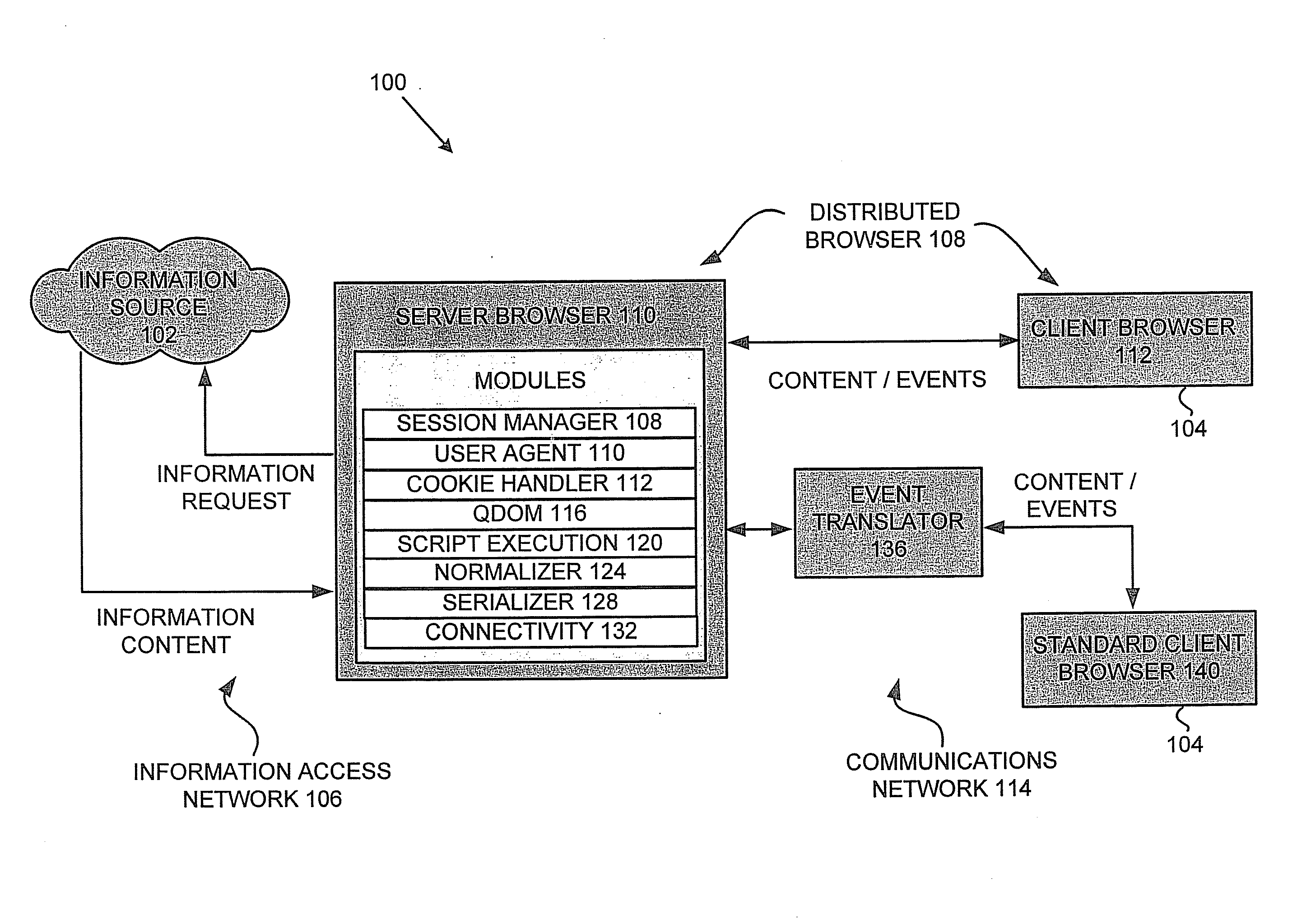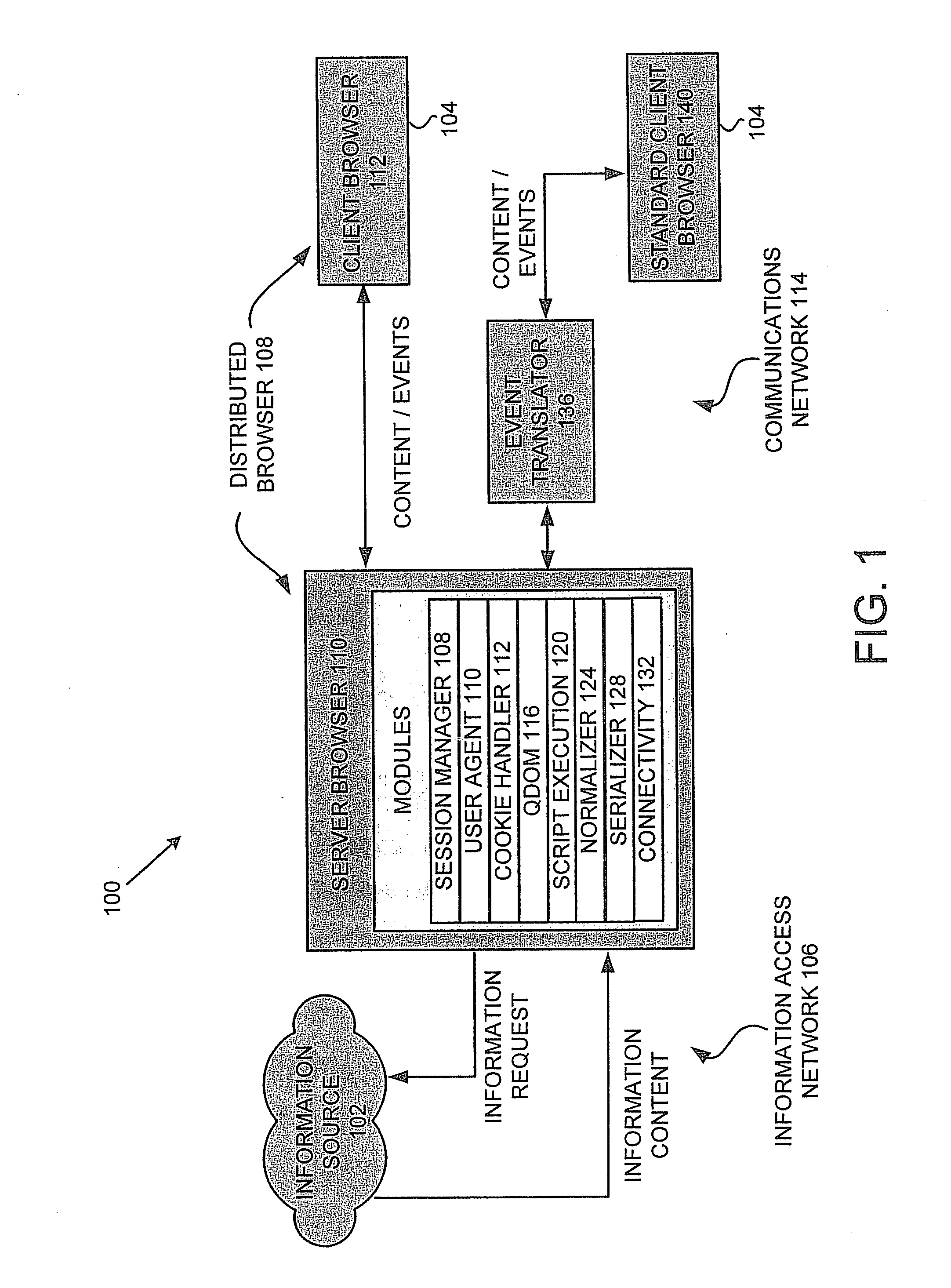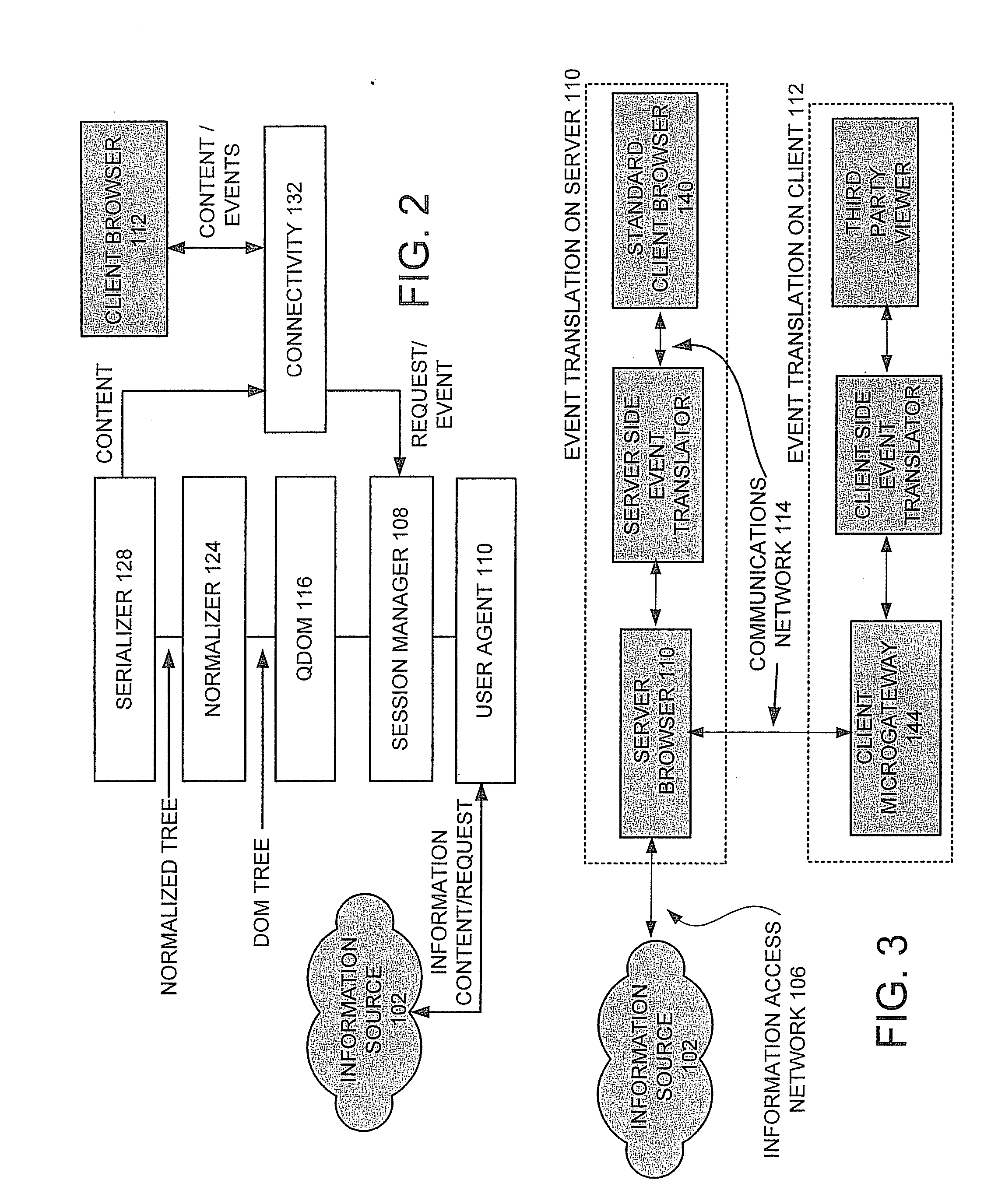System and Method for Displaying Information Content with Selective Horizontal Scrolling
a horizontal scrolling and information content technology, applied in the field of network communication, can solve the problems of inability of pda to faithfully access and display information content, inability of mobile or wireless devices with only low bandwidth capability to view information content intended for only high bandwidth applications, and inability of current electronic devices to take full advantage of dynamically generated content and interactive web sites. , to achieve the effect of large display screen, high cpu power, and extensive user input facilities
- Summary
- Abstract
- Description
- Claims
- Application Information
AI Technical Summary
Benefits of technology
Problems solved by technology
Method used
Image
Examples
Embodiment Construction
[0053]FIG. 1 shows a high-level block diagram illustrating an exemplary system 100 for accessing and adapting feature rich information content for presentation on an electronic device 104. The accessed and adapted information content is transmitted between an information source 102 and the electronic device 104.
[0054]The information source 102 includes any type of device such as a web server, application server, database or other backend system, or any interface such as a web service to an information provider. Preferably, the information source 102 provides information content expressed in a markup language, such as those markup languages known in the art including Hypertext Markup Language (HTML), Extensible Markup
[0055]Language (XML) with or without Extensible Style Sheets (XSL), VoiceXML, Extensible Hypertext Markup Language (XHTML), or Wireless Markup Language (WML). Furthermore, the information content can store images, video, audio information. Preferably, the information sou...
PUM
 Login to View More
Login to View More Abstract
Description
Claims
Application Information
 Login to View More
Login to View More - R&D
- Intellectual Property
- Life Sciences
- Materials
- Tech Scout
- Unparalleled Data Quality
- Higher Quality Content
- 60% Fewer Hallucinations
Browse by: Latest US Patents, China's latest patents, Technical Efficacy Thesaurus, Application Domain, Technology Topic, Popular Technical Reports.
© 2025 PatSnap. All rights reserved.Legal|Privacy policy|Modern Slavery Act Transparency Statement|Sitemap|About US| Contact US: help@patsnap.com



